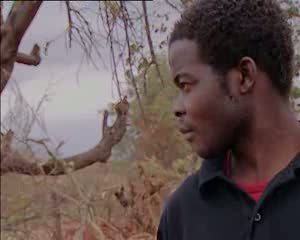- Text size
 |
|  |
|  |
| 
- عربي
UNHCR concern at xenophobic violence in South Africa
News Stories, 17 April 2015
PRETORIA, South Africa, April 17 (UNHCR) – The UN refugee agency on Friday welcomed government efforts to contain a wave of xenophobia in South Africa but said it was "extremely concerned" about the attacks in the past three weeks that have killed six people and displaced more than 5,000 foreigners. Those uprooted include refugees and asylum-seekers.
The attacks in KwaZulu-Natal province began in late March following an apparent labour dispute involving South African and foreign workers. These latest population movements come on top of displacement that took place in January as a result of similar incidents in Soweto, near Johannesburg in Gauteng province.
"UNHCR is extremely concerned. We have welcomed the response by the government in trying to contain the situation and provide assistance," spokesman Adrian Edwards said in Geneva. South Africa's Jacob Zuma told parliamentarians on Thursday that "refugees and asylum-seekers will be accorded support in line with international law and protocols, with the support of the United Nations High Commissioner for Refugees."
A UNHCR team has been sent to the coastal city of Durban to assess the situation and identify where the organization can support government and civil society partners in their response. The displaced foreign nationals are grouped in four tented shelters for displaced people established by the local Disaster Management Centre.
The number needing shelter is said to be increasing. The first group has been moved to a sports centre in Chatsworth that now shelters around 1,400 people, mostly single men, with few families. The men are separated from the women and children.
In Isipingo, there are nearly 300 people, and in Greenwood Park another 450. On Thursday, some 1,500 displaced people were moved to a new and larger site in Phoenix. Conditions in the community shelters are very basic and more needs to be done to ensure adequate sanitation and health facilities. In addition, an undetermined number of people have sought refuge in mosques, churches and other buildings.
UNHCR had been contacted by refugees who were in fear of being targeted. "People are also very anxious about not being able to earn a living and the loss of their livelihoods," Edwards said, while stressing that "those affected in these xenophobic attacks are refugees and asylum-seekers who were forced to leave their own countries due to war and persecution. They are in South Africa because they require protection."
The Government of South Africa has spoken out against these incidents. It has pledged to do it all it can to protect foreign nationals in the country and reaffirmed its commitment toward refugees and asylum-seekers in line with international law and protocols.
South Africa currently hosts some 65,000 refugees and 295,000 asylum-seekers.


























